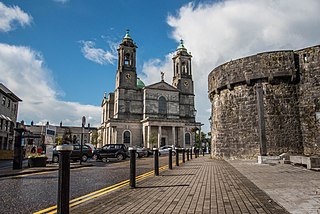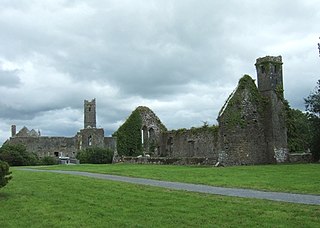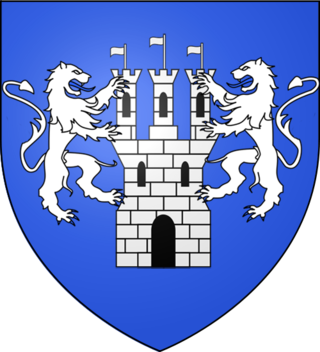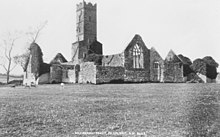
Athlone is a town on the border of County Roscommon and County Westmeath, Ireland. It is located on the River Shannon near the southern shore of Lough Ree. It is the second most populous town in the Midlands Region with a population of 22,869 in the 2022 census.

Aidhne, also known as Uí Fhiachrach Aidhni, Mag nAidni, later Maigh Aidhne, was the territory of the Uí Fhiachrach Aidhni, a túath located in the south of what is now County Galway in the south of Connacht, Ireland.. Aidhne is coextensive with the present diocese of Kilmacduagh.
Uí Maine was the name of a kingdom situated in south Connacht, consisting of all of County Galway east of Athenry, all of southern and central County Roscommon.
The Soghain were a people of ancient Ireland. The 17th-century scholar Dubhaltach Mac Fhirbhisigh identified them as part of a larger group called the Cruithin. Mac Fhirbhisigh stated that the Cruithin included "the Dál Araidhi [Dál nAraidi], the seven Lóigisi [Loígis] of Leinster, the seven Soghain of Ireland, and every Conaille that is in Ireland."

The Ross Errilly Friary is a medieval Franciscan friary located about a mile to the northwest of Headford, County Galway, Ireland. It is a National Monument of Ireland and among the best-preserved medieval monastic sites in the country. Though usually referred to by locals as "Ross Abbey," this is not technically correct as the community never had an abbot.

Ahascragh is a village in east County Galway, Ireland. It is located 11 km (7 mi) north-west of Ballinasloe on the Ahascragh/Bunowen River, a tributary of the River Suck. The R358 regional road passes through the village. As of the 2022 census, it had a population of 186 people. The village is in a civil parish of the same name.

Killeigh is a village in County Offaly, Ireland. It is located around 8 kilometres (5 mi) south of the county town of Tullamore, on the N80 national secondary road; the Slieve Bloom Mountains lie to the south. The village of Killeigh, which lies within the civil parish of Geashill, had a population of 183 in 2022.

Tubber is a village in the north of County Clare, Ireland.

Quin is a village in southeast County Clare, Ireland. The name also refers to a civil parish in the barony of Bunratty Upper, and to an ecclesiastical parish of the same name. The main attraction in the vicinity is Quin Abbey, the ruins of Franciscan friary, which is open to the public. Although roofless, much of the structure remains and is relatively well-preserved. The abbey was built on the foundations of an earlier Norman castle; the foundations of three corner towers can still be seen.
Feardorcha Ó Cellaigh, 79th and last king of Uí Maine, 43rd Chief of the Name, fl. 1584-after 1611.

Kilconnell or Killconnell Abbey(Irish: Mainistir Chill Chonaill) is a ruined medieval Franciscan friary located in Kilconnell, County Galway, Ireland.

Cappataggle is a village located between the towns of Loughrea and Ballinasloe in east County Galway. With the areas Kilrickle and Killalaghton it forms a parish of the same name. The name Cappataggle is an anglicisation of the Irish name Ceapach an tSeagail, which translates as ‘meadow of rye’. The village is centred on many dairy, livestock and tillage farms. The new M6 Galway to Dublin motorway toll plaza is located a half km from the village.

O'Kelly is an Irish surname and the name of a number of distinct sept families in Ireland. The most prominent of these is the O'Kelly sept who were the chiefly family of the Uí Maine in Connacht. Another sept is that of the kingdom of Brega, descended from the Uí Néill. A more minor sept of O'Kelly was that descended from the Uí Máil; this sept is referred to in Irish as the Uí Ceallaig Cualann, in reference to the region of their origin, Cualu.
Killeely is a civil parish that lies partly in County Clare and partly in County Limerick in Ireland.

Athlone North, also called North Athlone, is a barony in County Roscommon, Ireland. Baronies were mainly cadastral rather than administrative units. They acquired modest local taxation and spending functions in the 19th century before being superseded by the Local Government (Ireland) Act 1898.

Athlone South, also called South Athlone, is a barony in County Roscommon, Ireland. Baronies were mainly cadastral rather than administrative units. They acquired modest local taxation and spending functions in the 19th century before being superseded by the Local Government (Ireland) Act 1898.
Killarney Franciscan Friary is a monastic establishment in Killarney, County Kerry, Ireland.
The 2023–24 All-Ireland Intermediate Club Football Championship was the 20th staging of the All-Ireland Intermediate Club Football Championship since its establishment by the Gaelic Athletic Association for the 2003–04 season. The draws for the respective provincial championships took place at various stages. The championship ran from 21 October 2023 to 14 January 2024.













